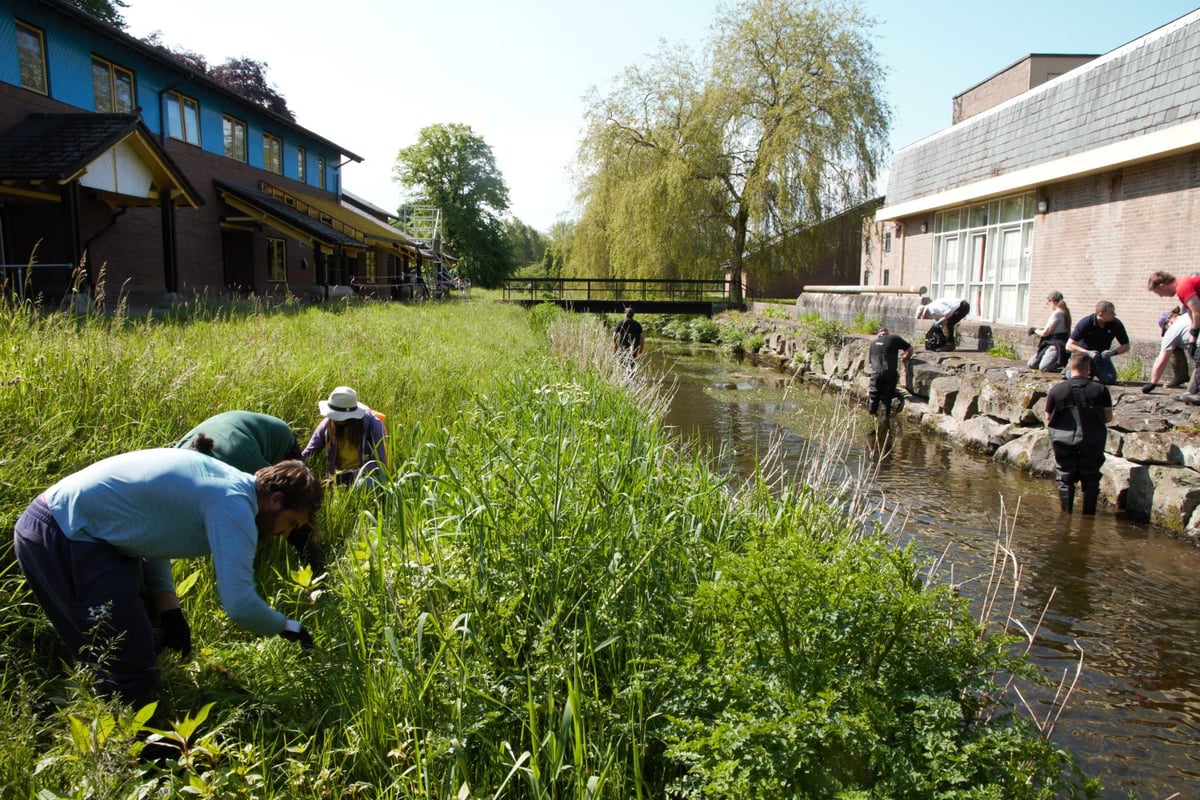A group of volunteers have taken to the river banks in Lampeter to tackle the spread of invasive Himalayan balsam. The group of 16 volunteers have worked hard this week to control the impact of invasive non-native species (INNS) on the Lampeter Dulas – a tributary of the River Teifi. Surveys over the last few years have shown extensive coverage of Himalayan balsam along the riverbanks of the Dulas.
Volunteers removed 300 metres of invasive Himalayan balsam plants along both banks of the river, with the aim of controlling the spread of the species further downstream. Aberaeron friends raise money for defibrillators Tourism chiefs welcome beach awards Exhibition among events to celebrate 50th anniversary of Lampeter shop Afon Teifi anthology reading to raise money for environmental charities Himalayan balsam is an invasive non-native species (INNS) which outcompetes native vegetation. While the purple flowers look beautiful in the summer, when it dies back in winter it leaves banksides bare and vulnerable to erosion.

This can have a detrimental effect on the ecosystem of the river. Soil and sediment eroding from the land can fill in gaps between river gravel, smothering the habitat that fish like salmon and trout use to lay their eggs and preventing oxygen from reaching the eggs. Joe Wilkins from the West Wales Rivers Trust said: “We’re delighted with the response to our request for volunteers and are grateful to those that turned up on the day for their help.
We will be .
















